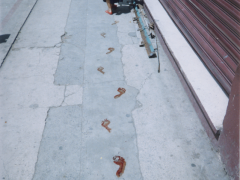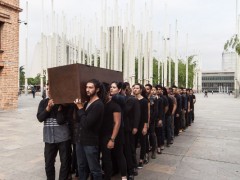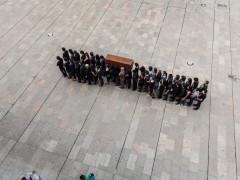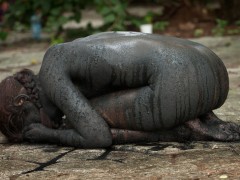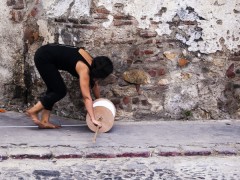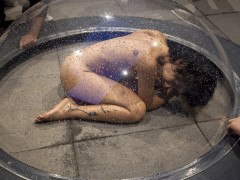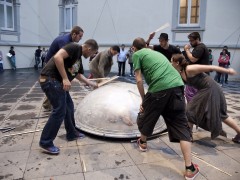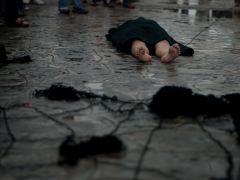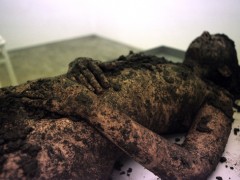Regina José Galindo Estoy Viva (I’m alive)
25.03 – 08.06 / 2014
Padiglione d’Arte Contemporanea (PAC), Milan
Curated by Diego Sileo and Eugenio Viola
In a crowded Pavilion of Contemporary Art during the opening evening on 24 March, Regina José Galindo performed Exhalación (estoy viva) [Exhalation (I’m alive)]—a new intense and poetic action, suspended between life and death, with great emotional involvement by the participants.
The new performance was conceived for the exhibition Estoy Viva, the first and most complete exhibition of Regina José Galindo’s artworks ever done before, open till 8 June, promoted by Milan Council for Culture, produced by PAC and Civita and curated by Diego Sileo and Eugenio Viola.
A scenario suspended between the imaginary and the symbolic welcomed the audience. A totally white room was specially constructed in the ground floor of the Pavilion in Milan. Inside, behind a closed door, Regina José Galindo lied naked, on a sort of tombstone. The temperature was low, as in a morgue. One person at a time had access to the artist. A mirror was given to each person: placing it close to Galindo’s nostrils, the visitors were able to carry away her breath clouding on the surface, the only sign that contradicted all the symptoms of an apparent death.
Regina José Galindo (b. 1974, Guatemala City) is one of the most representative artists of the magmatic Latin American continent. She uses her body in a political and critical way, as a tool for reawakening the removed traumas, the torments of the memories, and the ruins of history.
Starting from the microcosm of her country, Guatemala, perpetually experiencing instability and violence, the artist creates uncomfortable works, often brutal, where her tiny body, apparently fragile, is exposed to a series of public actions using the metaphorical space given by art to denounce the ethical implications of social and cultural injustices, discriminations of race and sex, and, more in general, all kinds of abuses stemming from power.
Galindo explores her body, turning it into a tool of symbolic recall of events that involve the collective body, the so-called “social body.” Her actions, involving her completely, on one side reiterate the artist’s engagement in the expression of our dramatic present by means of violence and pain, and on the other explicit a sense of deep impotence that hits both artist and viewers.
Suspended between life and death, Galindo experiences fear, anguish and their consequences, taking in her own body the physical and psychological risk, up to almost intolerable situations. Her radical and dramatic actions always focus on surprisingly critical events and become a way to redefine, one more time, the feeble boundaries between art and life.
Estoy Viva is divided in five sections, conceived as permeable categories interconnected: Politics, Woman, Violence, Organic and Death. Five macro-thematic emergencies present an open view over the artistic experience of Regina José Galindo. An itinerary builds through short circuits and slippage, from the origins till today, where some of her best known and emblematic actions such as ¿Quién puede borrar las huellas? (Who can erase the traces?, 2003), Himenoplastia (2004), Mientras, ellos siguen libres (While they are still free, 2007) and Caparazon (Shell, 2010) are presented side by side with more recent works never seen before in Italy such as Marabunta and Joroba (Hump, 2011), Descensión (Descent, 2013) or La Verdad (The Truth, 2013).
This post is also available in: Spanish

 Home
Home

